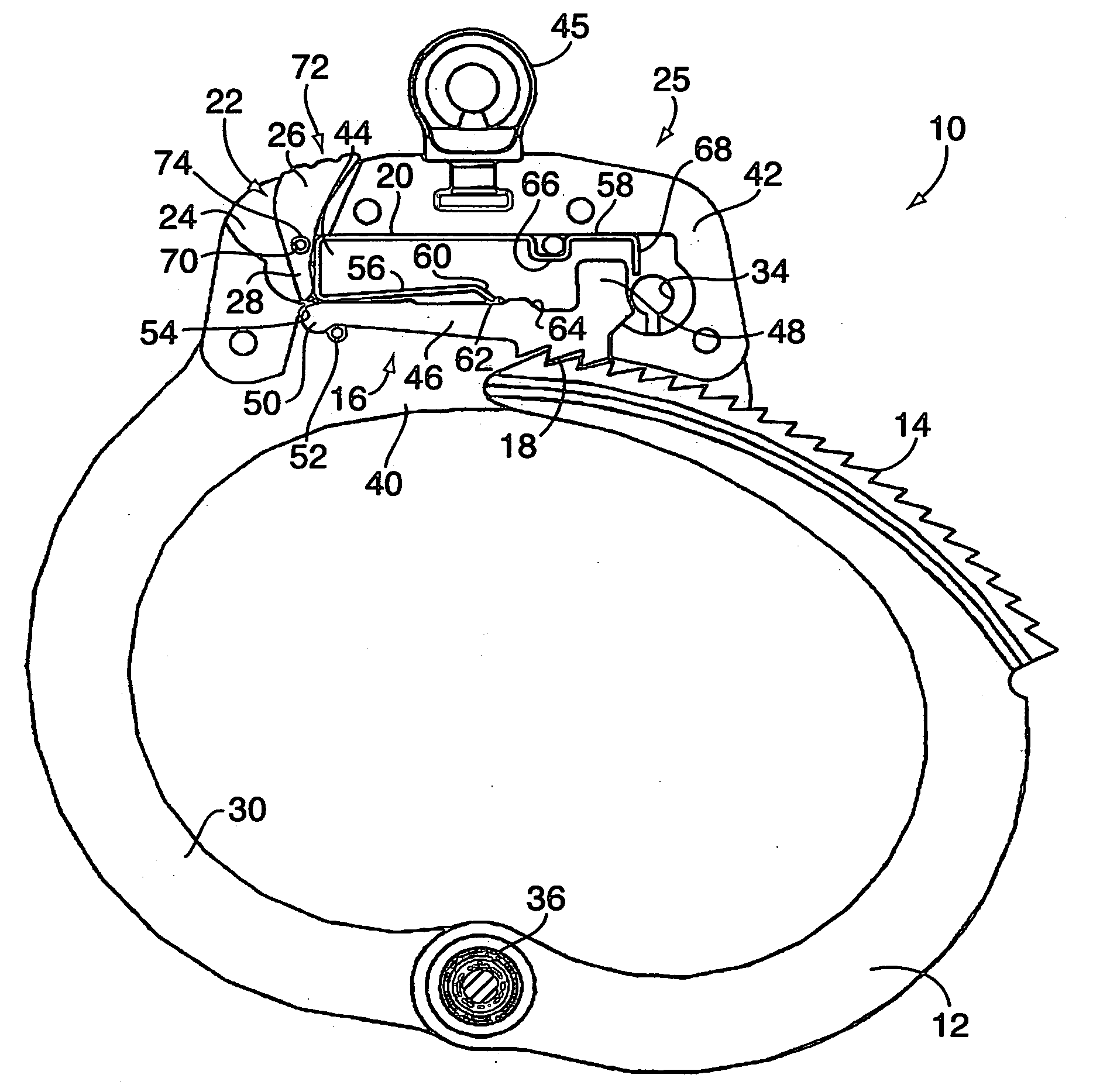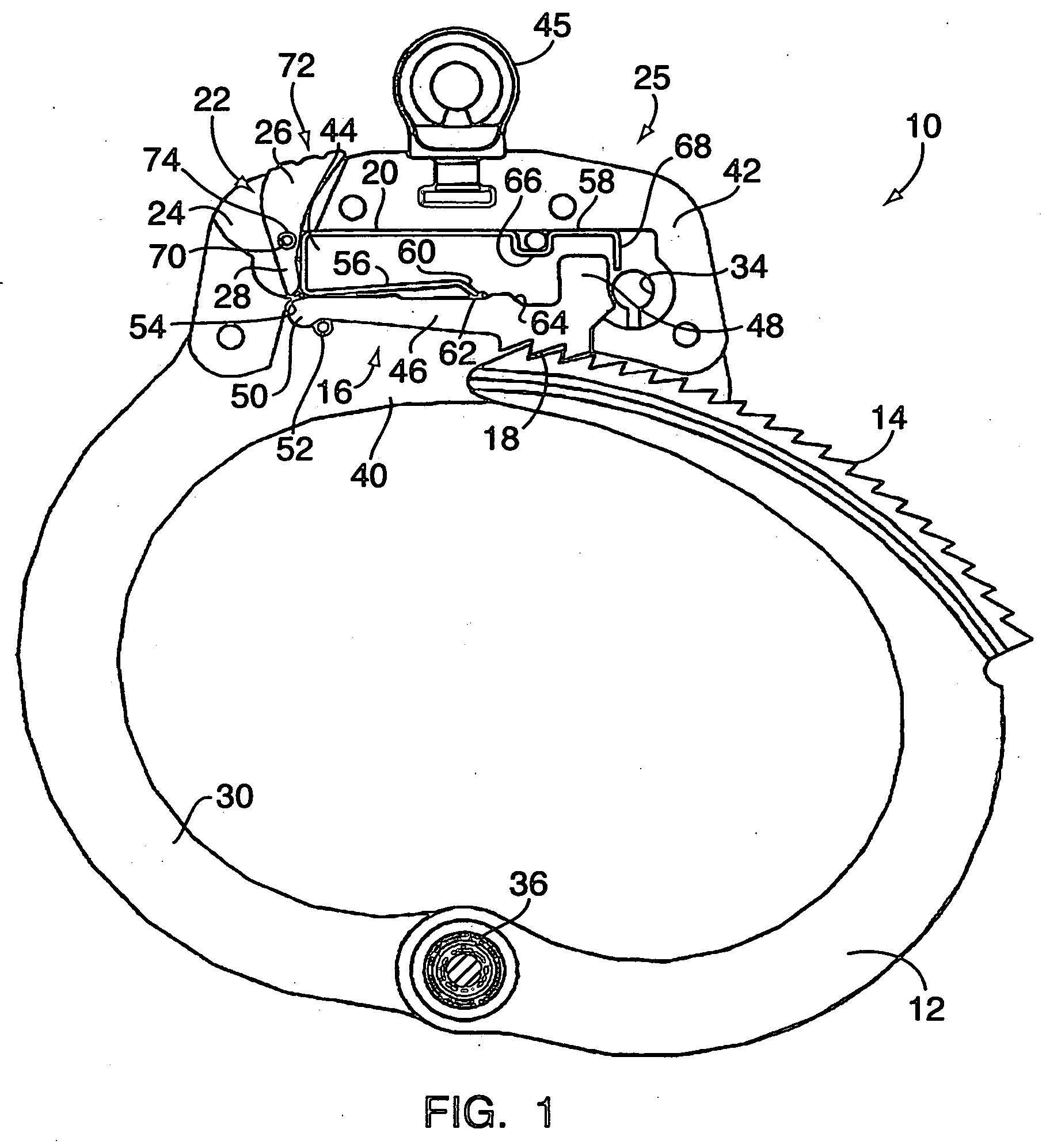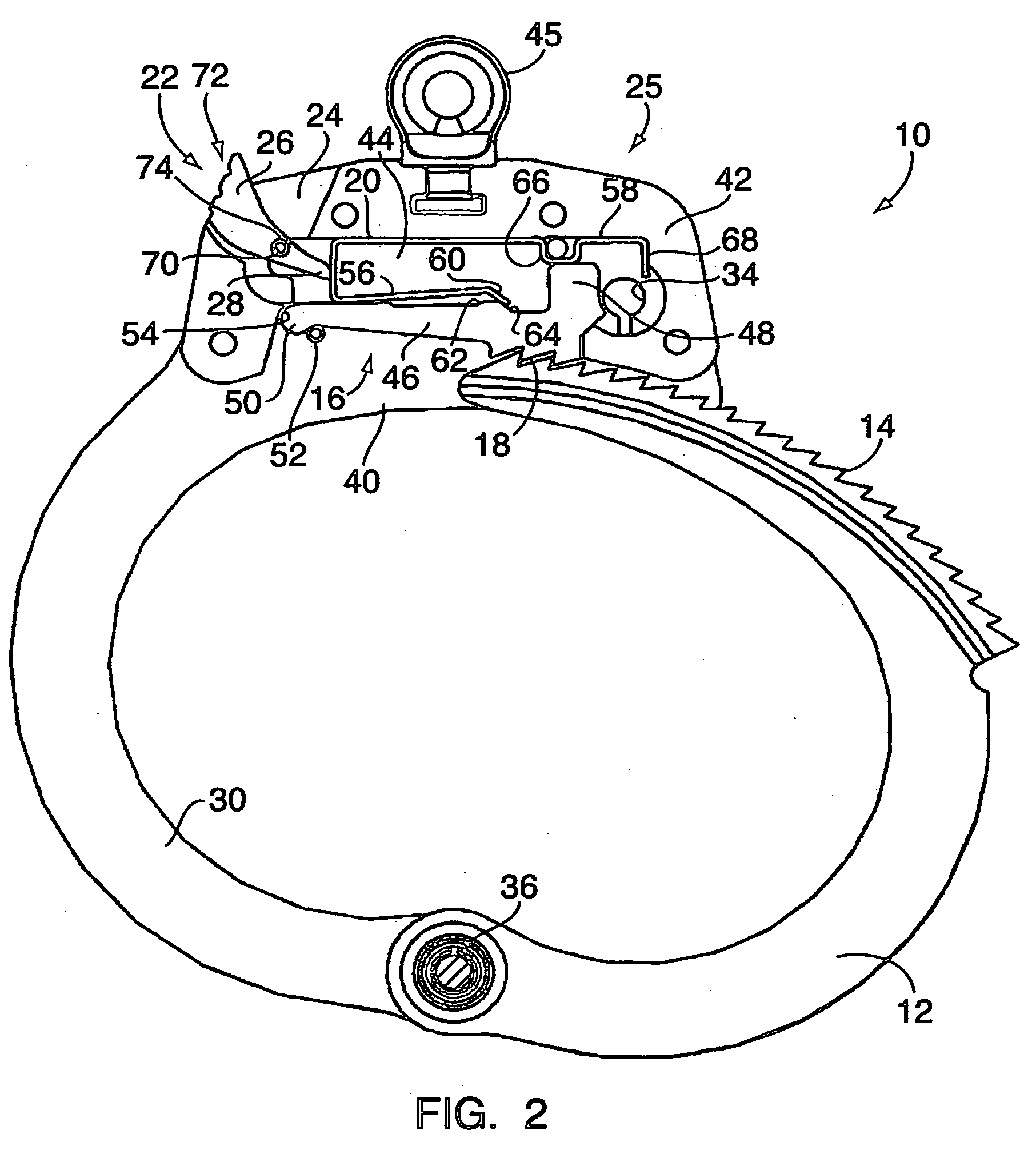Double locking handcuffs
a double-locking, handcuff technology, applied in the field of manades and cuffs, can solve the problem that the camera is somewhat more difficult to move in the actuation direction, and achieve the effect of preventing the camera from disengaging
- Summary
- Abstract
- Description
- Claims
- Application Information
AI Technical Summary
Benefits of technology
Problems solved by technology
Method used
Image
Examples
Embodiment Construction
[0025] With reference to FIGS. 1-6, an embodiment of a handcuff 10 with double lock mechanism comprises a pivoting jaw 12 with ratchet-like teeth 14 that cooperates with a pivoting bolt 16. The bolt 16 has reverse-facing teeth 18, and is biased downwards against the jaw 12 by a bolt spring 20. The spring 20 is laterally moveable between a first, “single-lock” position, as shown in FIG. 1, and a second, “double-lock” position, as shown in FIG. 2. For double locking the handcuff 10, a hand-operated, pivoting cam member 22 is provided. (By “hand-operated,” it is meant that the cam can be directly actuated using a finger or thumb.) The cam 22 is disposed within a slot 24 extending through a cuff housing 25. A wide, upper end 26 of the cam 22 is accessible from the top of the cuff, and a narrower, depending leg portion 28 of the cam 22 is positioned against the spring 20. To laterally shift the spring 20 from its single-lock position to its double-lock position, the cam upper end 26 is m...
PUM
 Login to View More
Login to View More Abstract
Description
Claims
Application Information
 Login to View More
Login to View More - R&D
- Intellectual Property
- Life Sciences
- Materials
- Tech Scout
- Unparalleled Data Quality
- Higher Quality Content
- 60% Fewer Hallucinations
Browse by: Latest US Patents, China's latest patents, Technical Efficacy Thesaurus, Application Domain, Technology Topic, Popular Technical Reports.
© 2025 PatSnap. All rights reserved.Legal|Privacy policy|Modern Slavery Act Transparency Statement|Sitemap|About US| Contact US: help@patsnap.com



